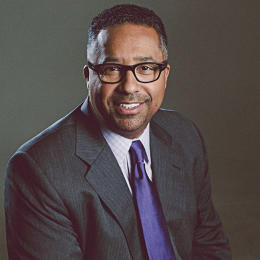#Leadership : Why Monday Is Your Most #ProductiveDay Of The Week…Even If it Doesn’t Feel like It. Here’s How to Make the Most of It.
You may be working for the weekend, but when it comes to actually getting work done, Monday is the most productive day, according to a study by Redbooth. The data collaboration software provider found that the highest percentage of tasks–20.4%–are completed on Monday, compared to Friday, when only 16.7% of work tasks are accomplished. Tuesday is a close second, accounting for 20.2% of work.
“Given the relatively low completion levels on the latter days of the week, it’s likely that Monday is the ‘catch up’ day at work,” according to the report.
WHY MONDAY IS MADE FOR WORKING
Mondays are prime for work because they feel like a fresh start, says productivity coach Deb Lee. “When you’ve had the weekend to take a break, relax and regroup, you come back to work fresher than when you walked out the door the previous Friday,” she says. “We tend to tackle our work week-by-week, which means Monday can often be less stressful than say a Thursday or a Friday when those end-of-week deadlines are approaching. That stress-free, clean-slate feeling on Monday morning can inspire creativity and boost productivity.”
Focus is often at its highest at the beginning of a work week, adds Scott Amyx, author of Strive: How Doing the Things Most Uncomfortable Leads to Success. “On Mondays, you have a vantage point, looking at your priorities for the week and then appropriately applying your highest level of concentration to the hardest tasks,” he says.
Willpower might also be replenished on Monday, says Amyx. “For those who believe that willpower is limited, I believe that they do apply the greatest energy on Mondays,” he says.
Like this Article ? Share It ! You now can easily enjoy/follow/share Today our Award Winning Articles/Blogs with Now Over 2.5 Million Growing Participates Worldwide in our various Social Media formats below:
FSC LinkedIn Network: www.linkedin.com/in/fscnetwork
Facebook: http://www.facebook.com/pages/First-Sun-Consulting-LLC-Outplacement-Services/213542315355343?sk=wall
Google+: https://plus.google.com/115673713231115398101/posts?hl=en
Twitter: Follow us @ firstsunllc
Question: Want the ‘the best/current articles/blogs on the web’ on Job Search, Resume, Advancing/Changing your Career, or simply Managing People?
Answer: Simply go to our FSC Career Blog below & type(#career, #leadership, #life) in Blog Search: https://www.firstsun.com/fsc-career-blog/
What Skill Sets do You have to be ‘Sharpened’ ?
Continue of article:
MAKING THE MOST OF MONDAY
The key to starting off the workweek in high productivity mode is being ready, says Lee. “You could prepare for the week on Friday afternoon, before heading home for the weekend,” she says. “Others look to Sunday evening as an opportunity to prep meals, pull clothes out for Monday morning, and check their calendars. It’s also fine to save your preparation for Monday morning—just be sure to set aside at least 30 uninterrupted minutes when you arrive at your desk to regroup and map out an action plan.”
Set up the week for success by not completely unplugging over the weekend, says Amyx. “Perhaps one of the biggest culprits to a stressful Monday is email,” he says. “Workers end up sifting through dozens of emails to come up for air hours later to find out it’s already lunch time. Give yourself permission to check once or twice on the weekend to quickly prioritize what’s urgent, important, lower priority or spam.”
Use your renewed energy on a Monday by blocking out time to focus, suggests Amyx. “Success comes when we do the things most uncomfortable,” he says. “Instead of acquiescing to your urge to check your email on Monday morning, time bound it to five to 10 minutes, not to answer emails but rather to quickly organize and prioritize. Then allocate the next one to two hours to do the hardest, brain intensive work without interruption.”
And cancel Monday morning meetings, suggests Mike Vardy, author of The Front Nine: How to Start the Year You Want Anytime You Want. “If your meetings are scheduled for first thing on Mondays and if you have any pull with your superiors then ask if it’d be possible to shift the meeting to later in the day,” he writes on his Productivityist blog. “Mention that giving each of your colleagues time in their own space before going into a meeting would allow them to be more ‘present’ in the meeting. If you are absolutely certain that there’s no way you can avoid that early morning Monday meeting, then make sure you prepare for that meeting the night before. That alone will make your Monday morning better.”
When you start to organize your Mondays by your priorities, productivity, and rewards then you feel great about your accomplishments, says Amyx. “There’s no greater satisfaction than knowing that you overcame the biggest, gnarliest cognitive, creative work to make significant progress on your project or tasks,” he says.













